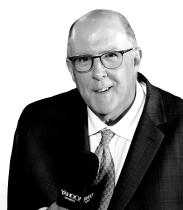Srisaket Sor Rungvisai, Juan Francisco Estrada make compelling case for overlooked class

It was boxing’s not-so-hidden secret for years. If you wanted to see the most action on a regular basis, you’d watch the divisions from 122 pounds and under. Those are the fighters who often throw more than 1,000 punches in a fight and fight with a skill and a passion on a regular basis rarely seen in the heavier weights.
Part of boxing’s decline over the last several decades is that television all but ignored these elite fighters, allowing an all-time great like Ricardo Lopez to fight most of his glorious career in the shadows.
Slowly, that appears to be changing, and that couldn’t be better news for the health of the sport. On Saturday at The Forum in Inglewood, California, on the second super flyweight card promoted by Tom Loeffler and televised by HBO in five months, Srisaket Sor Rungvisai and Juan Francisco Estrada provided another compelling example of why their division is so compelling.
Rungvisai won a majority decision in a pitched battle that featured high-level skill and enormous power. Judges had it 117-111, 115-113 and 114-114, giving the win to Rungvisai, who retained his WBC super flyweight title. Yahoo Sports scored it 115-113 for Rungvisai.
Rungvisai is one of the hardest punchers in the sport pound-for-pound and barges forward for three minutes a round, 12 rounds a fight, bringing big-time heat. But Estrada, a slick counter puncher, fearlessly waded into danger and raked the Thai champion with sharp, clean shots.
Neither man was just winging wild shots without thinking. They were setting up their attacks and using all of their skills to put on a high-contact, fast-paced, beauty of a fight. The 12th round was a stirring battle in which Estrada, behind on the cards and needing at least a big finish to have a shot, if not a knockout, summoned all his powers and put together the round of his life.
He scored repeatedly with flush shots to the face that swelled Rungvisai’s cheeks and eyes, but did not put him down. Rungvisai was, he should have been, pleased with his work.
“Estrada was a very good fighter,” Rungvisai said. “He was a good, strong fighter. I love this style of boxing and it was a tough fight.”
That it was, and it was just more proof in the overwhelming case that those who control which fights go on television in the U.S. need to open their eyes.
It was the kind of fight that demands a rematch — Estrada felt he’d won — and Runvisai said, “I’ll fight anyone at 115. I’ll fight Estrada again.”
That is some of the best news that a boxing fan could hope to hear. Even better news would be if the bout was enough to convince television executives to take off the blinders and give the same consideration to the the smaller weight fighters as they do to their larger brethren.



